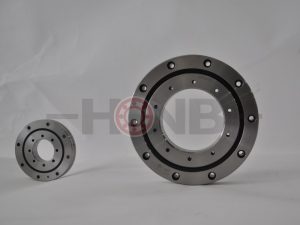Factors Affecting the Degreasing Quality of Antirust Oil
Author: hongyuanTime:
The quality of degreasing mainly depends on four factors: degreasing temperature, degreasing time, mechanical action and degreasing agent.
1. Degreasing temperature
In general, the higher the temperature, the more complete the degreasing. This is because of three reasons. First, the temperature changes the physical properties of oil stains, such as anti-rust grease with a high drop point, Vaseline, solid paraffin, etc. It is difficult to use even a high concentration of lye at lower temperatures. wash. However, when the temperature of oil stains is increased, their viscosity decreases, and even droplets are formed to facilitate removal. Second, to promote the progress of chemical reactions, generally speaking, the rate of chemical reactions doubles for every 10 degrees increase in temperature. Third, it accelerates the movement of surfactant molecules, thereby promoting infiltration, emulsification, and dispersion. As the temperature increases, the solution’s ability to dissolve dirt also increases.
However, it is not always the case that the higher the temperature, the better. Various degreasing agents have their own suitable temperature ranges. In the degreasing solution using certain types of surfactants, too high temperature will cause the precipitation and aggregation of the surfactants. Oil droplets adhere to the surface, causing uneven blooming of the phosphating film.
2. Degreasing time
In the degreasing operation, it is necessary to ensure sufficient degreasing time. The degreasing time of pressure jet is generally 1.5 to 3 minutes, and the immersion degreasing is 3 to 5 minutes (depending on the type and amount of oil pollution). Increase the degreasing time, that is, prolong the contact time between the degreasing liquid and the oil stain, thereby improving the degreasing effect. The more oil there is, the longer the degreasing time will be. In the assembly line operation, it is often not allowed to use too long time, so generally spray pre-degreasing for 1 minute, and then immersion degreasing for 3 minutes.
3. Mechanical action
In degreasing, mechanical action such as pressure spraying or stirring is very effective, because when spraying, the fresh degreasing solution is forced to have good contact with the surface of the part, and the content of the whole degreasing solution is uniform, which is beneficial to improve the degreasing effect; when spraying Relying on mechanical force to promote the degreaser to penetrate and destroy the oil film, so as to effectively force the oil stains off the surface of the parts; when spraying, the oil stains from the parts are emulsified and dispersed in the degreasing solution to prevent the oil stains from being adsorbed on the surface of the cleaned parts.
In medium and low temperature degreasing, mechanical action is particularly important. Generally speaking, pressure spraying is more than 1 times faster than immersion degreasing. The injection pressure is usually (0.1~0.2) Mpa (the degreasing agent used for pressure injection must be low-foaming, so as not to affect the normal operation and the loss of the degreasing liquid due to excessive foaming), and the dipping and degreasing can not be regarded as static dipping, and a circulating pump must be equipped , so that the solution is continuously stirred, and the circulation volume per hour is about 5 times the volume of the tank liquid.
4. The effect of degreasing agent on degreasing effect
The composition of the degreasing agent and the method of use have a great influence on the degreasing effect. For example, lye degreasing with surfactants is better than alkaline solution alone. For solid or semi-solid greases with high dropping points, solvent cleaning is more effective than other degreasing effects. In order to improve the emulsifying and dispersing ability of oil stains, it is effective to appropriately increase the content of surfactants in the degreasing agent. Different types of surfactants and different alkaline substances have certain differences in degreasing effect. A large number of experiments were carried out to determine the ratio of the components to each other through repeated screening.
For lye degreasers containing surfactants, the most effective cleaning action is at the upper limit of the critical micelle concentration of the surfactant. In the process of use, the degreaser will be continuously consumed to reduce the concentration. Therefore, the degreaser must be added regularly to maintain the necessary concentration. The degreasing effect of the degreasing agent is not directly related to the concentration. Therefore, for the situation where the quality of degreasing is very high, the method of greatly increasing the concentration should not be adopted, but the method of secondary degreasing should be adopted. The two degreasing liquids can be the same , and there is no need to increase the concentration additionally.
In actual use, all factors must be considered, so that all factors are controlled in the best state, so that the degreasing can achieve satisfactory results.


We have rich experience on precision bearing manufacturing and are ranked NO.1 in China and NO.3 all over the world.
We can tailor the overall solution for the use of precision bearings.
HONB– Accountability & Innovation
Products
- YRT rotary table bearing
- YRTS rotary table bearing (high speed series)
- YRTM with integral angular measuring system series
- ZKLDF axial angular contact ball bearing series
- RA series crossed roller bearing
- SX series crossed roller bearing
- CRBH series crossed roller bearing
- RE series crossed roller bearing
- RU series crossed roller bearing
- RB series crossed roller bearing
- XR/JXR series crossed taper roller bearing
- Crossed roller bearing
Contact Us

✉️ bearing20@hyzcgroup.com
📞 +86 15236685001





